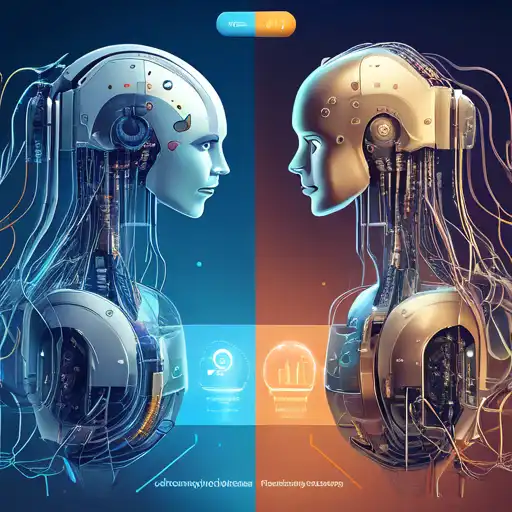Introduction to Machine Learning and Deep Learning
In the realm of artificial intelligence (AI), Machine Learning (ML) and Deep Learning (DL) are two pivotal technologies that drive innovation. While they are often used interchangeably, they possess distinct characteristics and applications. This article delves into the key differences between ML and DL, providing clarity for enthusiasts and professionals alike.
What is Machine Learning?
Machine Learning is a subset of AI that enables systems to learn from data, identify patterns, and make decisions with minimal human intervention. ML algorithms are trained using structured data and can perform tasks such as classification, regression, and clustering.
Types of Machine Learning
- Supervised Learning: The algorithm learns from labeled data.
- Unsupervised Learning: The algorithm explores unlabeled data to find structure.
- Reinforcement Learning: The algorithm learns by interacting with an environment to achieve a goal.
What is Deep Learning?
Deep Learning, a subset of ML, mimics the workings of the human brain in processing data for decision making. DL uses neural networks with many layers (hence 'deep') to analyze various factors of data. It excels in handling unstructured data like images and speech.
Key Features of Deep Learning
- Automatic Feature Extraction: DL algorithms can automatically identify the features to be used for classification.
- Scalability: Performance improves with the amount of data, making DL highly scalable.
- Complexity: DL models can handle complex patterns and relationships in data.
Machine Learning vs. Deep Learning: The Key Differences
While both ML and DL aim to teach machines to learn from data, their approaches and capabilities differ significantly.
Data Dependency
DL requires large amounts of data to perform well, whereas ML can work with smaller datasets.
Hardware Requirements
DL models are computationally intensive and often require GPUs for training, unlike ML models that can run on CPUs.
Feature Engineering
In ML, feature extraction is manual and requires domain expertise. DL automates this process, reducing the need for human intervention.
Interpretability
ML models are generally more interpretable than DL models, which are often considered 'black boxes' due to their complexity.
Choosing Between Machine Learning and Deep Learning
The choice between ML and DL depends on the problem at hand, the amount of available data, and computational resources. ML is preferable for smaller datasets and when interpretability is crucial. DL is ideal for complex problems with large datasets where automatic feature extraction is beneficial.
Conclusion
Understanding the differences between Machine Learning and Deep Learning is essential for leveraging the right technology for your AI projects. While ML offers simplicity and interpretability, DL provides power and scalability for handling complex data. By considering the key differences outlined in this article, you can make informed decisions in your AI endeavors.
